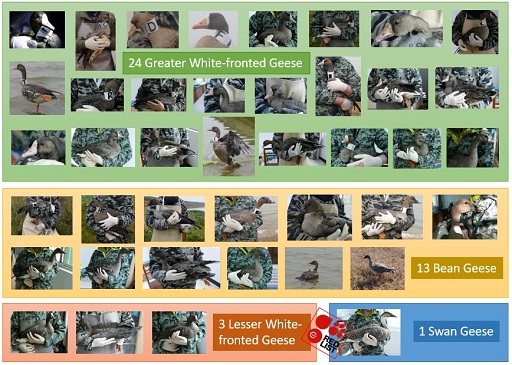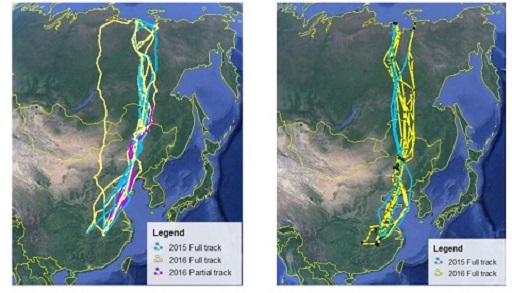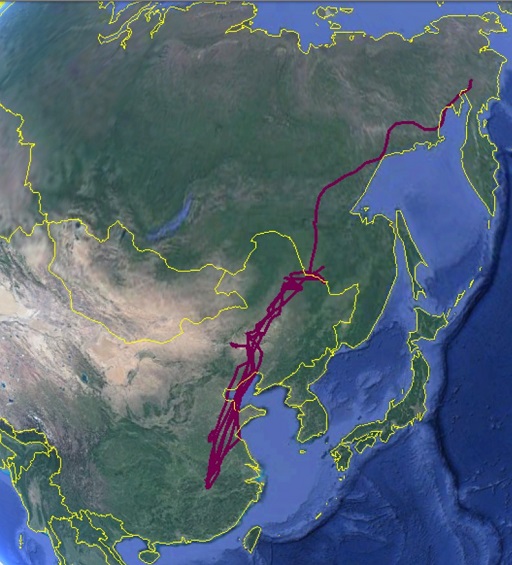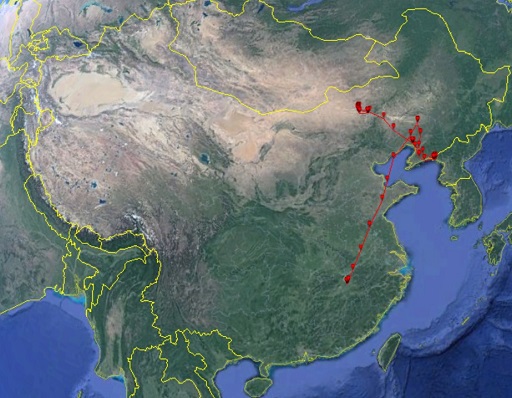Relying on the excellent research team of Tsinghua University, Department of Earth System Science(DESS)Tsinghua University Si Yali research group carried outancooperationresearchwith the Poyang Lake National Nature Reserve Administration Bureau. They carried out two satellite tracking workformigratory waterfowl respectively in February and December2015, in Jiangxi Province, Poyang Lake protected areas, in order to understand the migrationrulesand dynamic pattern of East Asiangeese under the influence ofenvironmental factor. Thesetwoworkssuccessfully captured and released 41 migratory waterbirds, including 4 white fronted GooseinFebruary 2015 and 37wildgooseinDecember 2015 (20white fronted Goose, 13bean gooseand 3 white fronted goose goose, 1swan goose) (Figure 1). The project aims to research the migration routesand rulesand important stopover sites, providing an important scientific basis for the Asian Waterbird Conservation and habitat protection and management.

Figure 1 released 41 geese in 2015
By now, 22 data are recycled successfully. During thespringmigrationin 2016, 8 white fronted geese migrated with a distance around 5000km, and came back to propagation areas of buckled Delta and the Yana Bay in the end of May and the beginning of June (left panel in Figure2). And 7 out of 8 geese came back toPoyang Lake protected areasfor wintering successfully and all are in good condition. 6 white fronted geese were out of contact when they reached Nenjiang River Basin which is 2800 km away from wintering area.

Figure 2 spring (left) and autumn (right) migration routeofwhite fronted Goosefor wintering inthe lower reaches of the Yangtze River Basin
At the same time, the research groupgot part of springmigration route of 7bean geese in 2016 (Figure 3), in Shandong, Qingdao (E011), Northeast (E024, H004, H019, H022, T012) respectively.AndinSevero-Evenskiy (E007), which isadjacent to the breeding ground, the data waslost,andE007 flight distanceis5700 km.

Figure 3Springmigration route ofbean geese in 2016 in Poyang Lake
GooseH015 left Poyang Lake in March 11, 2016 and moved to South Korea after arrived in Horqin, thenmigratedwestwards,andstoppedat Chifeng, Xilinguole etc. (April 10th to July 13th) (Figure 4).

Figure 4 goose H015 spring migration route (from March 11 to July 13, 2016)
The above pictures shall not be used or reproduced without permission. If you have any questions, please contact Si Yali. (yalisi@mail.tsinghua.edu.cn)